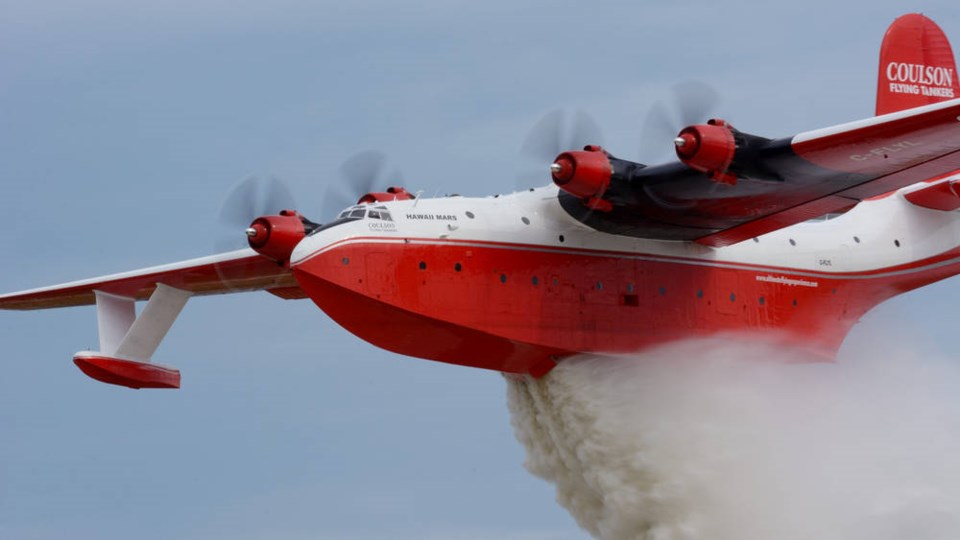A commentary by a retired B.C. Wildfire Service senior air attack officer and Type 2 incident commander, with 40 years experience firefighting, including 28 years firebombing. Barratt was tasked with training the Martin Mars flight crews after the Coulson Group purchased the bombers in 2007, and evaluated its performance alongside Bombardier’s CL215T skimmer in 2008 in the Kootenay.
Every time the fire seasons become aggressive and long in B.C., there is a call for the return of the Martin Mars.
The Mars served its time successfully, but aerial firefighting has advanced significantly over the years, and the Mars is no longer as economical or efficient as modern aircraft.
One recent letter to the Times Colonist claimed there are “unexplained reasons” why the Mars is sidelined. I hope to provide a basic understanding of those reasons.
There are national and international agreements in place to share resources with B.C. in fighting fires. Two of the largest suppliers of airtanker services in the world are Conair Aerial Firefighting in Abbotsford and Air Spray Tankers in Alberta.
These companies build and contract firebombing aircraft to many jurisdictions in the Yukon, Northwest Territories, the rest of Canada, France, Australia and throughout the U.S.
Firebombing aircraft are an expensive resource requiring contracts obtained through a bidding process. No air carriers are excluded from bidding and must meet all terms and conditions advertised. The applicants and aircraft, including maintenance and modification, must first be approved by Transport Canada.
In early May every year, the B.C. government contracts eight tanker groups to be stationed at designated tanker bases throughout the province. Each group consists of small, medium and large aircraft.
The number of aircraft dispatched to a fire depends on the fire’s behaviour, size and values at risk. The air attack is controlled by the birddog aircraft.
There are two types of firebombing aircraft: Skimmers deliver water, airtankers deliver fire retardant.
In firebombing, aircraft must be on an appropriate alert to respond to fires of varying intensity. A red alert means wheels must be rolling within five to seven minutes for contracted aircraft. At its fastest response, the Mars will take 30 minutes, meaning lost time in taking action.
Comparing a target with the same water source and elevation, a Fire Boss aircraft has a turnaround time of about 10 minutes to return to the fire, whereas the Mars takes about 30 minutes because of longer, slower circuits over the fire and the skim pick-up point.
When tankers are needed to relocate quickly to another fire, they can be fully repositioned within minutes. A Mars can take more than a day to do so, due to the exclusive supportive equipment that is needed to support the aircraft.
Most fires in B.C. are in mountainous terrain, and the Mars is unable to fly down these steep slopes due to manoeuvrability and drop accuracy.
Drop accuracy is essential in proximity to structures. The weight and velocity of the drop is factored in, making the Mars too risky to use in that case, as the load impact can destroy structures. The volume and accuracy delivered by the Fire Boss group far exceeds those of the Mars.
Finally, air traffic congestion over a major fire becomes extremely dangerous with a larger aircraft. The destructive forces associated with their wing tip vortices can stay over the fire for more than 30 minutes, inhibiting smaller aircraft working the fire, such as helicopters and birddogs.
The Martin Mars was indeed a valuable tool in its day, along with other piston-engine firebombing aircraft. However, the current turbine engine aircraft are faster, with computerized tanking systems that control the length and volume of drop needed, making them the choice of fire suppression agencies around the world today.



